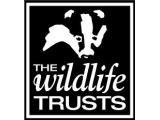Arreton Down Wildlife Reserve - Newport
| |||||||||||||||||||||
Arreton Down features Calcareous grassland / wildflowers The down holds a great variety of wildflowers - the best areas on Arreton have around 30 species per square metre. This includes good displays of yellow, horseshoe and kidney vetch. The downland is grazed through the winter by some 18 cattle, which not only graze the fine, herb rich, open grassland, but also push into the scrubbier places and rougher grassland helping to break up this less desirable sward. Some open ground is also created as they make their way along the down to the water trough.This allows different plants to seed into the disturbed ground. Scrub/woodland The scrub edge to the downland is a valuable habitat for nesting birds and shade loving plants. It provides a valuable corridor for red squirrels to gain access to new areas to forage. The mix of ash, Hazel, field maple, hawthorn, blackthorn, bramble etc forms a band of shelter from the prevailing wind so creating warm areas which benefit the many butterflies present. New areas in the blackthorn, hawthorn and bramble have been opened up, which will provide sheltered, warm spots for invertebrates on the lower edge of the down. Butterflies/invertebrates Throughout the year the grassland hosts many butterfly species: common blue, brown argus, gatekeeper, small heath, large, small, dingy and grizzled skipper, green hair streak, marbled white, occasional clouded yellow with a spectacular emergence of chalkhill blues in August. Birds (resident /migrants) Regulars on the down are kestrel, common buzzard, green woodpecker, whitethroat, lesser whitethroat, lark, meadow pipit, yellowhammer, stonechat, wheatear, an occasional pair of raven, turtle dove, rooks from a rookery at the Western end of the down. Archaeology Arreton is dotted with Barrows, Holloways and finds of ancient artefacts have been made. However, the down is protected and metal detecting and digging is not allowed! Any archaeological investigations are only undertaken by professionals with permission of the Wildlife Trust and Natural England. Views There are wonderful views, from the higher parts of the down, of the East Yar valley, the Wroxall and Ventnor Downs, St Catherine’s Down, Culver Down, Newport, Chillerton, West Highdown and the Needles. Site of Special Scientific Interest The down is notified as a SSSI as it supports two important species: Great green bush crickets - often found in summer clambering around in the scrub grassland margins. The males can also be heard in the evenings making a loud harsh song. Bastard toadflax a low growing, yellow/green, semi parasitic plant which scrambles through the chalk loving sward with small, white, five-petalled flowers. | |||||||||||||||||||||
